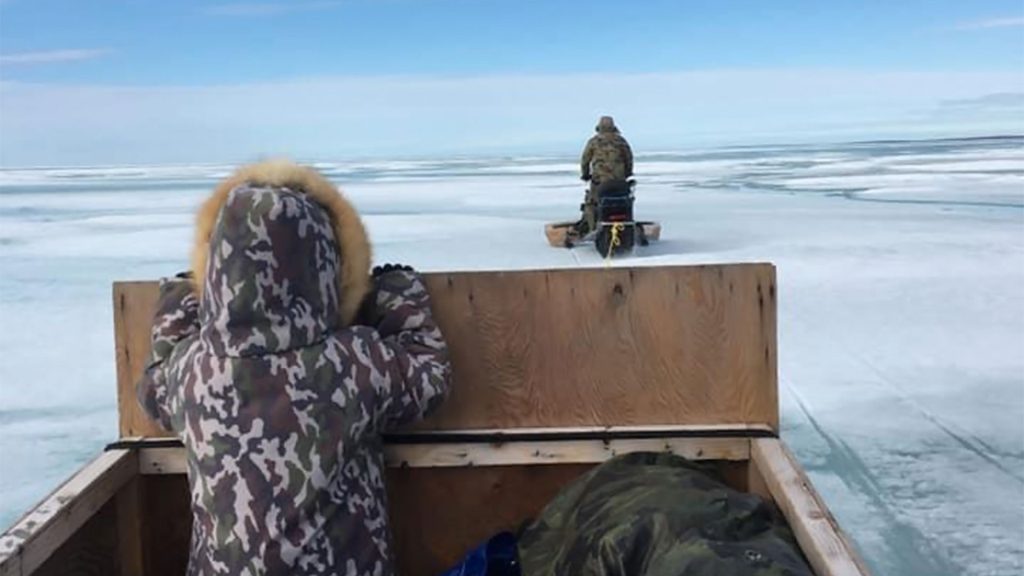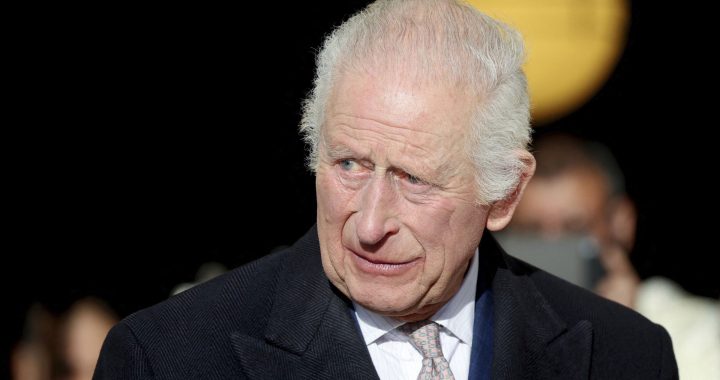
A child rides in a sled behind a snowmobile in Taloyoak, Nunavut. Photo courtesy R.T. from Taloyoak
There is no word for “disabled” in the Inuit language.
Instead, in Nunavut people contribute according to their abilities, says a new study sponsored by the Canadian Centre of Caregiving Excellence (CCCE).
“That’s significant for us as a disability organization…,” says Alyson Colón, research associate for Nunavummi Disabilities Makinnasuaqtiit Disabilities Society (NDMS) in Iqaluit, who produced the study on caregiver needs across the Arctic territory.
“We’ve spoken a lot with interpreters and Nunavummiut about trying to find a word and there isn’t a direct translation because it’s just not a cultural concept that has a history.”
The research gathered throughout 2022 and 2023 shows how Nunavummiut view caregiving and what they need from governments to feel better supported.
The study entitled The Meaning of Care and Care Work in Nunavut says caregiving is largely carried out by family members – both male and female.
This is part of Inuit culture, says Colón, but also out of necessity.
The 25 remote communities that comprise Nunavut are isolated from each other and the rest of Canada due to a lack of connecting roads.
“They are fly-in, fly-out communities,” says Colón, who visited 24 but was unable to get to the last due to stormy weather.
“They face not just one barrier, but several within their communities: accessible transportation, safe housing, medical specialists … All those things kind of interact and make it hard for caregivers.”
Colón saw and heard many examples of challenges for families who live with snow, ice and cold temperatures most of the year. She says one would load their family member into the back of a pickup truck every day for appointments at the only health centre in town.
“(This person) weighed over 200 pounds … and was in the back of a truck exposed to the elements.”
This is part of what defines “care” among the Inuit.
“Giving a helping hand is a way of showing respect, particularly to elders, a way to provide autonomy and an act of love,” says Colón. “They want to help elders felt special and know that they are special.
“They said, ‘This is what we do; this is who we are as Nunavummiut.’”
Families and communities
Colón says Inuit are very proud of the care being provided by families and the resilience of their communities.
At the same time, caregivers voiced concerns about the lack of choices.
“There is a housing shortage, a lack of (medical and disability) equipment and no real support services,” says Colón.
“Care falls to the family but they would like help.”
They’d also like to see cultural programs and a gathering space to do that.
In Nunavut, the study says the definition of disability includes a broad spectrum of physical and mental conditions, such as mobility impairments, sensory impairments, mental health disorders, substance use disorders, and developmental disabilities like Fetal Alcohol Spectrum Disorder (FASD).
That is reflected in the 32-page study that makes recommendations for improving care and support systems in the territory.
“Caregivers are often giving care and receiving care themselves,” says Colón. “They’re living with a disability and need care themselves.”
Needless to say, there isn’t much time or space for self-care.
“They cited stress and strain, burnout, lack of support, the need for respite (care), childcare and financial support,” says Colón.
Already, the next generation is being eyed as upcoming family caregivers, she added.
Unlike other territories and provinces, Nunavut only has three long-term care facilities to serve the entire population of 40,000 people.
And, there are only two accessibility vans, although the Nunavut government has committed to buying five more, Colón says.
The study cites situations similar to those in other underserved and rural areas of the country.
But some experiences are unique to Indigenous communities, like the remoteness, wait time for a specialist, and language and cultural barriers with service providers.
“While traditional Inuit values provide a strong foundation for caregiving in Nunavut, there is a pressing need for systemic changes to enhance support services and promote the well-being of individuals with disabilities and their families,” concludes the report.
“This approach honours the region’s rich cultural heritage while addressing the evolving needs of its residents, ensuring that care practices are both effective and culturally respectful.”
It is hoped the study will help government officials learn more about the issue in Nunavut, and guide them in developing policies, says Colón.
It would also remind them of the invisible labour at play.
“Caregivers did share a feeling of being forgotten,” she said. “Of not being listened to.”










